It turns out that Blue Opal has had an electronic fuel sender since I bought her, it’s just never been hooked up to anything that can display the signal. I’d noticed the wires going to the top of the fuel tank, but had concluded that they didn’t do anything useful. As it happens, this conclusion was correct, but not for the right reasons.
While everyone else in Dun Laoghaire was off participating in a local regatta, K and I investigated that wire. It required that K went down the hole (the port locker), and I contorted myself into the top of the starboard locker to tug on the wiring until K could see what moved. The wiring ran down the side of the tank (behind the plywood), under the tank, through the cutout below the tanks into behind the engine, up the starboard bulkhead by the exhaust, and vanished into the cubby above the engine. This cubby has the wiring for the Yanmar panel, the Tank Tender’s hoses, my bodged-in hour meter for the engine, the 12V cigarette socket, the Webasto heating controls, and the cold plate controls for the galley cold box. Oh, and two fuses that I don’t remember installing, so I need to check my notes (they’re the right style that I would have installed them). So not too many wires…
After a bit of tracing, cutting of zip ties, and so forth, we proved (with a long lead and a multimeter) that there was indeed a pair of terminals on the end of a flat black cable that went all the way back to the top of the tank.. but connected to nothing. Well, the ground/black was connected, but the red was just hanging out in mid-air. There’s no fuel gauge in that space at all, just the Tank Tender.
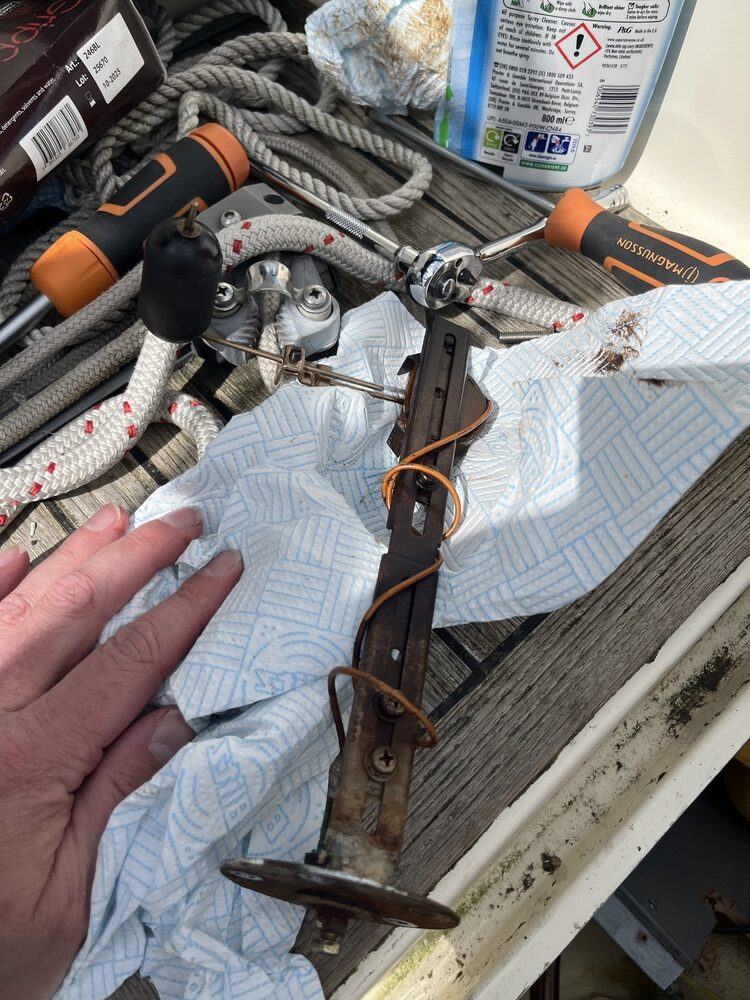
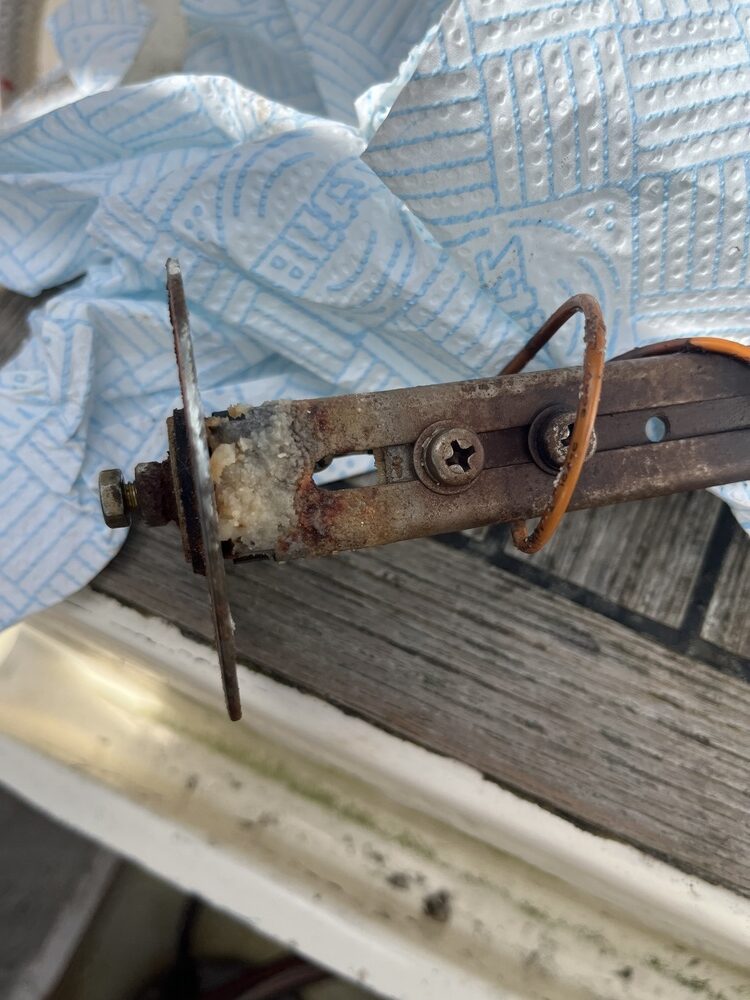
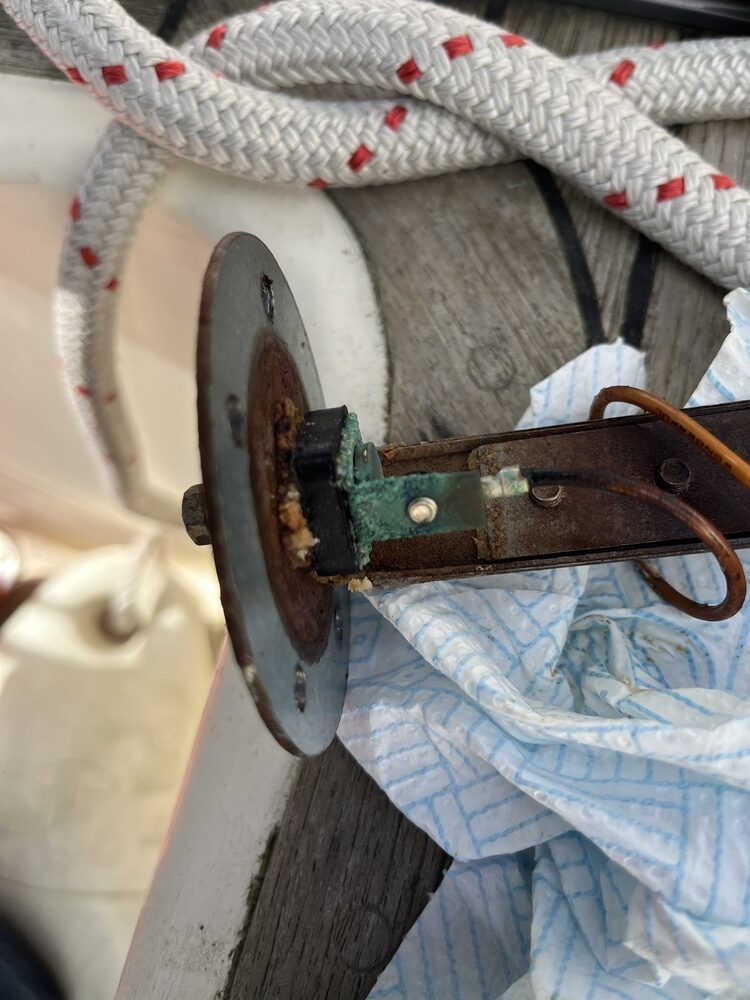
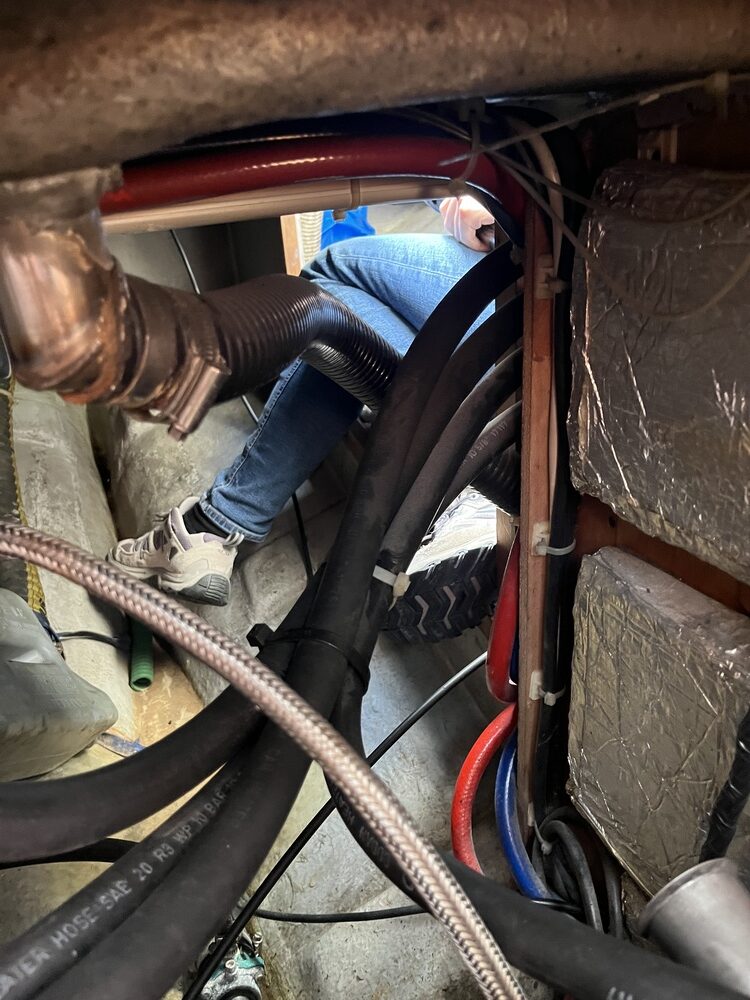
As the gallery above shows, the existing sender is a simple mechanical one, using a wiper arm to change the resistance against the current flowing through the sender. It should be pretty reliable, but I was getting readings in the kilo-ohms with the sender out-of-circuit; the expected range is either 0 to 190 ohms for a European spec sender, or 240 to 30 ohms for an American spec sender. Kilo-ohms is so far out of tolerance that it’s not even worth trying to fix it.
A bit of research showed that the hole pattern is a standard; SAE 5. In this pattern, the holes are not equally spaced, but instead vary between 68 and 72 degrees apart. The end result is there’s only one way to mate a fitting to the holes.
Some more research brought up a few ways to replace the broken unit. Option one was another mechanical sender. Option two was a mechanical sender with a capsule on top to provide immediate readings at the tank, and wiring to a gauge elsewhere; this appears to be an American thing. Option three was a float based sender that’s totally sealed, and has nothing that might classify as a moving part (other than the external float).
I settled on a Wema S5 fuel/water sender, 300mm long, European spec – option three. The tube is full of reed switches, and the float contains a ring magnet to toggle the switches. Blue Opal’s tanks are a bit deeper than 300mm, and a 325mm would possibly have fit, but I’m content to treat the fuel at the bottom as spare and refuel based on the level the gauge sends. I also picked up a Wema gauge, and it can live in the cubby over the engine alongside the engine hours meter. When I get around to upgrading the boat network, it’ll be possible to convert the analogue setup to digital too, without changing the sender itself.
The tanks are nominally 50 litres each, and rough math says I’ll have about 6 litres overall left when the gauge reads empty, but those 6 litres are in the last 2 cm of the tank, and I wouldn’t trust the pick-up to get that fuel in a rough sea (been there, done that, had the RNLI call-out).
Speaking of the pick-up, I got a good look into the tank when I had the sender out, and the tanks aren’t bad but a good drain, clean, and dry would be a sensible idea. Definite dark clumps at the bottom of the tank. It should be possible, with a bit of careful work, to take the plywood assembly off, disconnect everything, and rotate the tanks to lift them out – they’re wider than they are tall, and the gap above them is narrower than they are wide.
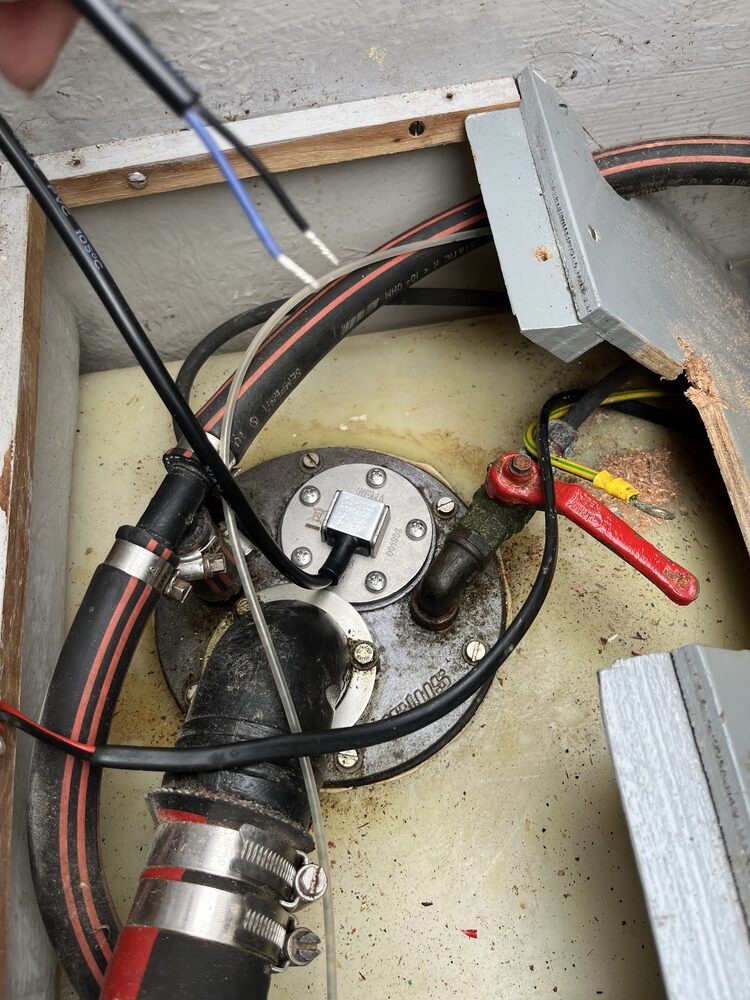
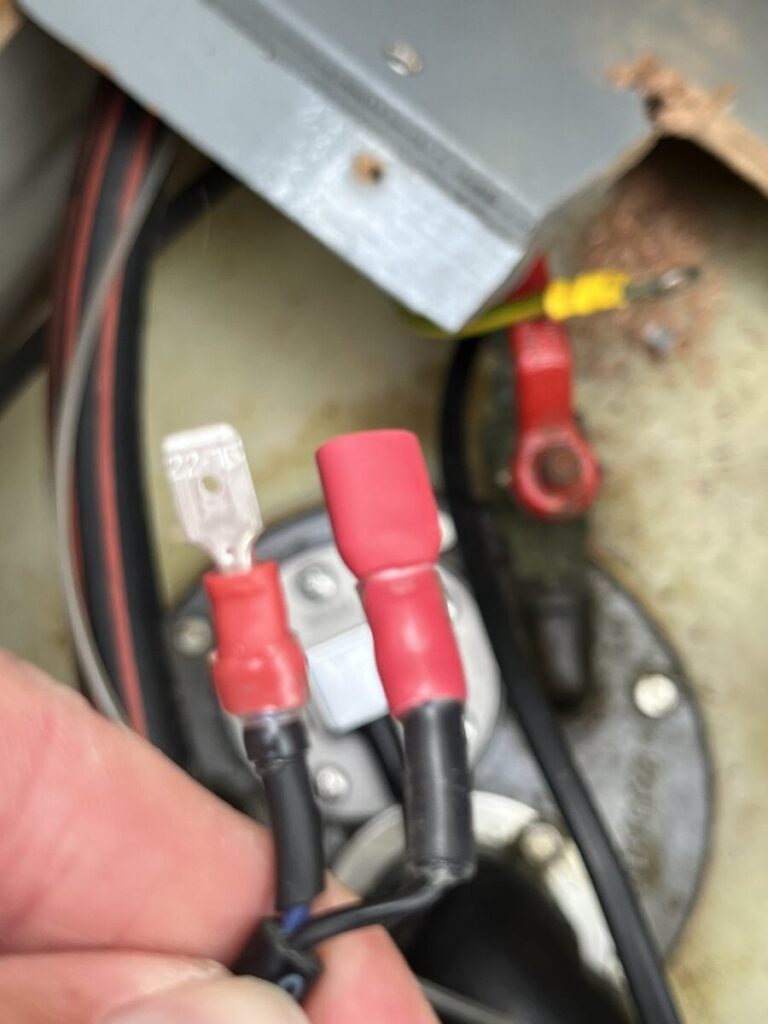
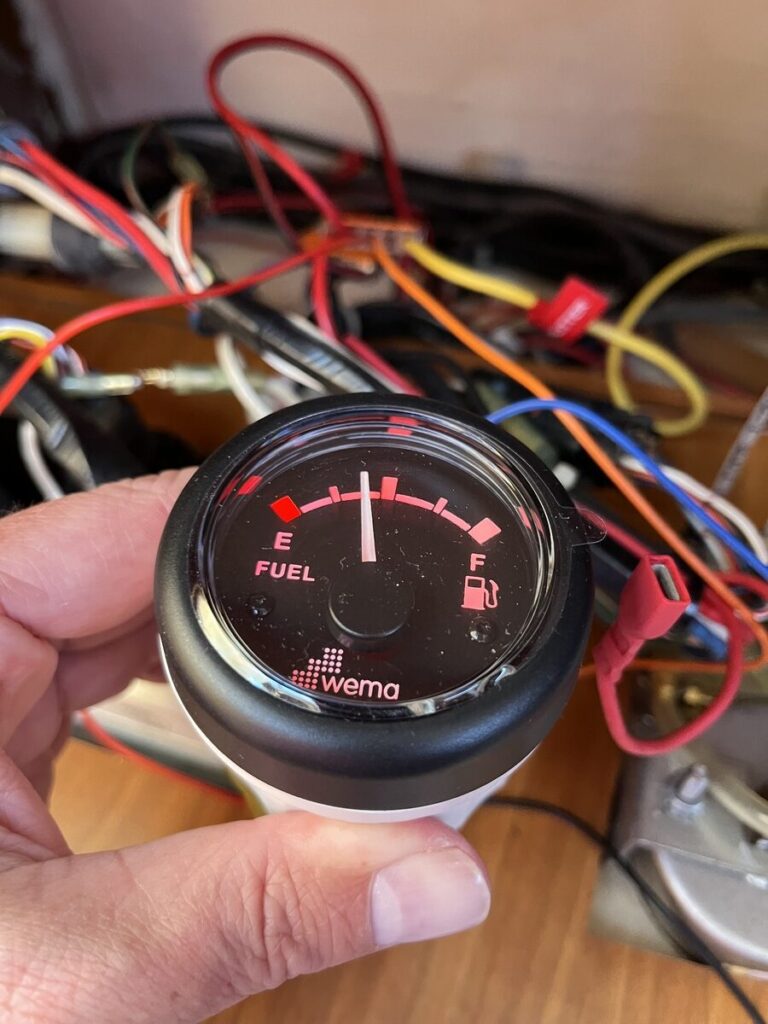
The new sender has had terminals applied that are inverse to each other; that is, one wire has a spade connector, and the other has the spade receptacle connector. It’s a resistance sender, so it doesn’t really matter, but it means I can never confuse which wire on the sender connects to which wire coming from the gauge.
Oh, and someone had problems with the machine screws at some point, and replaced two of them with M6 machine screws instead of M5 ones. Thus, the nice M5s that came with the sender are loose, and of course they’re next to each other so they don’t clamp the flange down on the gasket. So I’ve had to drill the two holes in the sender’s flange so the M6 machine screws will fit. Pity, the Wema ones have a nice thread-less top section, so there’s just that little bit of play to align things.